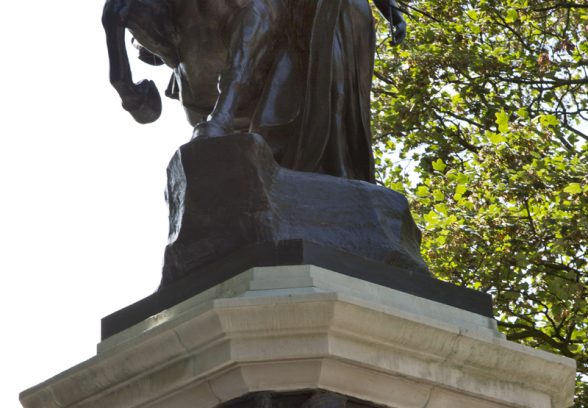This website uses cookies
This website uses cookies to enable it to function properly and to analyse how the website is used. Please click 'Close' to accept and continue using the website.



London: The Royal Artillery Boer War Memorial
Status: Listed Grade II
Architect: William Robert Colton (1867-21)
Location: Horse Guards Parade, London
The war memorials that were erected to the Anglo-Boer Wars in the UK represented the first ever mass raising of war memorials in this country. The scale was unprecedented: no previous war, even those of a similar scale such as the Crimea (1854-1857) and the Napoleonic Wars (1798-1815), resulted in such a popular and public expression. This one, which records the names of 1,078 dead, was unveiled by H.R.H Prince Arthur, Duke of Connaught on 20th July 1910. The plinth rests on a granite platform, with a curved back wall that has pillars at either end. Colton’s sculpture depicts a winged figure (peace), calming and controlling a horse (the spirit of war). The memorial was desecrated and parts of it quite badly damaged in the Peace Procession on 19th July 1919 – it had been boarded up for the duration of the procession, but the hoardings were ripped off by some of the marchers. It was restored in 1923. The National Archive contains a detailed and fascinating file on the memorial and its history (file 20/149). Colton was born in Paris, the son of an architect and came to England in 1870, where he studied at Lambeth School of Art under William Silver Frith. He was Professor of Sculpture at the Royal Academy Schools from 1907 to 1910 and from 1911 to 1912. Amongst his works is another Boer memorial in Worcester, commemorating local men who had fallen in both campaigns and a highly-acclaimed 1898 sculpture, The Girdle, a female nude in bronze, now housed by the Tate.
Jon Wright
Either enter the name of a place or memorial or choose from the drop down list. The list groups memorials in London and then by country

Become a C20 member today and help save our modern design heritage.